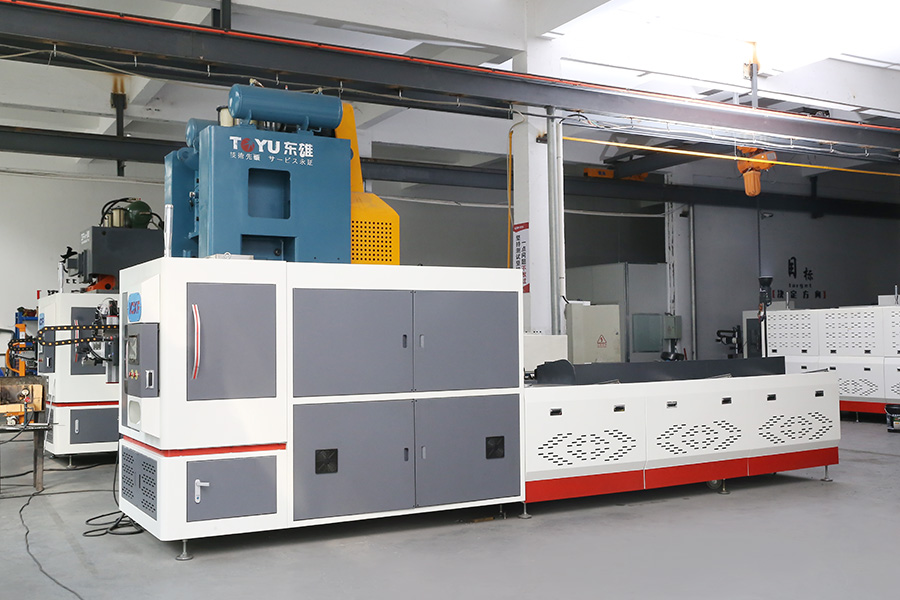80T/125T Fully Automatic Hot Forging All-In-One Machine
This equipment has an exquisite appearance and is highly integrated: it integrates feeding, heating,...
View MoreIn modern industry, Hot Forging Processing Technology is often compared with traditional metal forming methods like casting, machining, or cold forming. For many manufacturers, the choice between these approaches has profound implications on cost, quality, strength, and production efficiency. At the heart of the hot forging route lies the Forging Heating Furnace, which ensures that metal billets are brought to the high temperature before deformation.
How Hot Forging Processing Technology Works
To set the stage, let’s briefly restate how Hot Forging Processing Technology works:
A metal billet or blank is heated in a Forging Heating Furnace to a target temperature (often above recrystallization temperature).
The heated metal is transferred to a press, hammer, or die, and shaped under high pressure.
Because the metal is above recrystallization point, deformation is easier, internal stresses relax, and grain structure can be refined.
After forging, additional treatments (heat treatment, trimming, machining, etc.) may follow.
The Forging Heating Furnace is essential: if the metal is not uniformly and properly heated, defects—cracks, uneven material flow, warping—can arise. Modern furnaces with zoned control, induction heating, or smart control systems can improve uniformity, reduce waste, and increase yield.

Advantages of Hot Forging Over Traditional Methods
Here are the key benefits when you compare Hot Forging Processing Technology with traditional approaches:
1. Superior Mechanical Properties & Strength
Hot forging aligns and refines the internal grain structure of the metal. This gives improved mechanical strength, toughness, and fatigue resistance.
Casting, by contrast, solidifies from a molten state, often generating dendritic microstructures, segregation, or porosity, which weaken mechanical integrity.
Thus, parts made via hot forging tend to perform better under stress, making them preferred in demanding industries (automotive, aerospace, heavy equipment) where reliability is critical.
2. Better Material Utilization & Lower Waste
Hot forging is relatively material-efficient: you deform a solid workpiece rather than melting and pouring. Less scrap, fewer defects, and reduced trimming all translate to savings.
Additionally, if the Forging Heating Furnace heats uniformly and minimizes heat losses, the energy wasted is reduced, improving cost-efficiency.
3. Predictable & Consistent Quality
Forgings respond more reliably to heat treatment and inspection because the material is already homogenized and refined.
Casting parts may exhibit variable internal structure or hidden defects that complicate quality control.
4. Faster Throughput & Cycle Times (Especially with Automation)
Once the furnace and forging line are optimized, hot forging can yield higher throughput. Continuous or semi-continuous heating systems help maintain flow, reduce downtime from heating cycles, and speed up transfer.
Integrating automation, furnace control, and handling mechanisms ensures that the heating stage does not bottleneck production.
5. Ability to Use Advanced Alloys & Customize Properties
Hot forging allows working of tougher, higher-strength alloys that might be difficult to cast or machine economically. For alloys that are notoriously hard to process, proper heating control is critical. The Forging Heating Furnace must be tailored to avoid overheating, grain growth, or burn damage.
Moreover, because hot forging works above recrystallization temperature, the process can relieve internal stresses and promote better microstructure.
Comparing Hot Forging Processing Technology with traditional manufacturing methods reveals clear trade-offs. Hot forging, aided by a well-designed Forging Heating Furnace, offers mechanical properties, consistency, and material efficiency. Traditional methods retain advantages for certain geometries, low volumes, or specific tolerance demands.